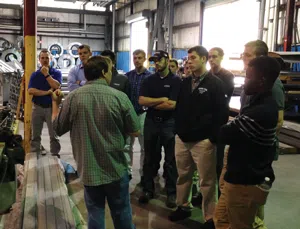How VRF Will Save You Money Over Time
Considering the hefty upfront cost of light-commercial applications, it is hard for some to imagine that a variable refrigerant flow (VRF) system could ultimately save money over traditional HVAC systems. According to global market intelligence agency BSRIA, this misperception is the main reason the adoption of VRF technology is slow in North America.
That said, the system’s long-term energy savings, reliability and customizable comfort stand to make VRF one of the most rapidly growing sectors of the domestic HVAC market. In fact, according to Transparency Market Research, VRF systems are rapidly establishing a position in the U.S. commercial HVAC market.
VRF is a sophisticated technology that allows for simultaneous cooling and heating while attaining higher energy efficiencies than traditional HVAC units. VRF systems also increase efficiencies through the use of inverter technology to control refrigerant flow.
The inverter adjusts the compressor speed, allowing the refrigerant flow rate to increase or decrease to match the required internal load for varying capacities. In addition to more precise and direct energy use, the VRF system allows for more customized control. Users can obtain superior comfort in their environment through zoned controls. Once the ideal temperature is set in each zone, VRF indoor units sense the temperature and provide cooling or redistribute heating between zones where it is required.
In spite of these clear benefits, VRF installations are still only 5 to 9 percent of the national HVAC market due to upfront investment. In terms of cost comparison, VRF can be anywhere from 10 to 50 percent more expensive than traditional systems. But with focus limited on just the initial price, designers, engineers and building owners may not be familiar with the long-term cost benefits of a more precise and resilient system.
Advanced technology ensures VRF systems have a decreased margin of error, keeping maintenance and repair costs lower while extending the life cycle of the system. VRF systems achieve some of the highest efficiencies available in the HVAC marketplace, helping attain LEED certifications or meeting local regulations. Higher efficiency and lower maintenance lead to lower total cost of ownership
The growth in acceptance of VRF will not necessarily mean a steep decline in traditional HVAC purchases. These two types of systems are best suited for different applications and can even be paired to work together. A traditional HVAC system works best for large open spaces where a consistent temperature is necessary throughout, like event centers or warehouses. VRF is better suited for buildings with smaller zoned spaces, like classrooms, hotel rooms or offices.
At Lennox, we recognize certain applications will require serving both large open spaces and zoned areas simultaneously. In these instances, we recommend that the best investment is a combination of VRF and traditional DX HVAC units.
Employing this strategy can increase energy efficiency, comfort levels and customization capabilities, while also allowing for system combinations with older and new HVAC products to meet specific user needs. Pairing traditional HVAC with VRF is a great way to leverage the system’s benefits without the high cost of investing in an exclusively VRF system.
When keeping the customer in mind, VRF is an easy sell. The initial cost measured against the total life cycle, technology, energy efficiencies and overall benefits of the system make it a smart purchase. Additionally, the easy-to-install and lightweight VRF unit is compatible with older systems already in place, reducing the investment to attain the benefits. In terms of VRF’s uptick in the commercial HVAC marketplace, the growth will be exponential soon with the realization that VRF is a cost saving alternative.
 Chris Drury leads the sales efforts for Lennox International's North America Commercial VRF Business Unit. For additional information, visit lennoxcommercial.com.
Chris Drury leads the sales efforts for Lennox International's North America Commercial VRF Business Unit. For additional information, visit lennoxcommercial.com.


 Chris Drury leads the sales efforts for Lennox International's North America Commercial VRF Business Unit. For additional information, visit
Chris Drury leads the sales efforts for Lennox International's North America Commercial VRF Business Unit. For additional information, visit 


